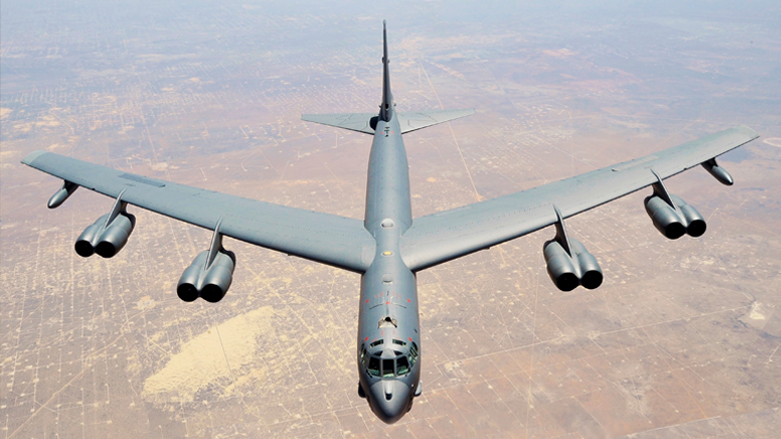US show of force in the Middle East, as US engages diplomatically in Iraq and prospects for JCPOA fade
“Two B-52H Stratofortresses, assigned to the U.S. Air Force Global Strike Command, conducted theater integration training and operations with a variety of U.S. Air Force, partner and ally aircraft,” it continued.

WASHINGTON DC, United States (Kurdistan 24) – The Air Force of US Central Command (CENTCOM) announced on Monday that it had carried out a Bomber Task Force mission on Sunday, flying from Britain to Kuwait.
The show of force came as the US Assistant Secretary of State for Near Eastern Affairs, Barbara Leaf, is visiting Baghdad and Erbil. Leaf’s visit marks a renewed US engagement in Iraq, after an extended period in which the Biden administration had been focused on renewing the 2015 Iranian nuclear deal, formally known as the Joint Comprehensive Plan of Action (JCPOA.)
Read More: Senior State Department official to visit Erbil
In Baghdad, Leaf gave a remarkable interview to the Iraqi News Agency, in which she warned that “the political situation in Iraq is on the verge of collapse,” as she called on Iraqi political parties to engage in dialogue, including with Muqtada al-Sadr, the top vote winner in last October’s elections.
Read More: ‘The political situation in Iraq is on the verge of collapse’: Barbara Leaf
The recent US measures—both the re-engagement in Iraqi affairs, as well as the demonstration of military force—come as prospects fade for renewing the JCPOA.
No individual has been a more fervent advocate of its renewal than Josep Borrell, the European Union’s foreign policy chief, repeatedly making overly optimistic claims that a deal was nearly at hand. Borrell’s fundamental misreading of the situation, however, repeatedly led to failed diplomatic sessions and conveyed the impression that the western countries were keener than Iran on reaching a new deal.
Read More: EU-sponsored Iran nuclear talks end, again, with no agreement
Borrell’s unwarranted optimism may even have prompted countries like the United Arab Emirates (UAE) to repair ties with Iran, thinking that the JCPOA was about to be renewed.
Read More: UAE envoy to Iran resumes duties after six years: Official
But, on Monday, as Borrell belatedly acknowledged, “The whole process [is] in danger,” and “I am less confident today than [48] hours ago about the convergence of the negotiation process and the prospect of closing the deal.”
Indeed, three days earlier, as Washington considered Iran’s latest response to what Borrell had touted as his “final text” for a new accord, US officials complained that Iran’s position was moving “in the wrong direction.”
Read More: US: Deepening Iran-Russia alliance is ‘profound threat,’ as JCPOA proves elusive
US Show of Military Force
On Sept. 4, US “ground and naval units, as well as coalition and regional partner air forces executed a Bomber Task Force mission across the US Central Command area of responsibility,” a CENTCOM Air Force statement, published on Monday, explained.
“Two B-52H Stratofortresses, assigned to the U.S. Air Force Global Strike Command, conducted theater integration training and operations with a variety of U.S. Air Force, partner and ally aircraft,” it continued.
This exercise “is a strong, clear representation of enduring U.S. commitment to the region,” Lt. Gen. Alexus Grynkewich the commander, said. “In addition to maintaining a sufficient, sustainable force posture, AFCENT [Air Forces Central] is able—in concert with our partners—to rapidly inject overwhelming combat power into the region on demand,” he stated.
“Threats to the U.S. and our partners will not go unanswered,” Grynkewich affirmed.
The flight of the bombers participating in the exercise began in England, at a Royal Air Force Base. They flew over the Eastern Mediterranean, Arabian Peninsula, and the Red Sea. Fighter escorts from the British Royal Air Forces, as well as the Air Forces of Kuwait and Saudi Arabia, participated, alongside the US planes.
“This kind of operation demonstrates the collective capabilities of the military partnership we’ve developed in the Middle East,” Gen. Michael Kurilla, the CENTCOM Commander, stated, before adding, “We have the ability to put a significant measure of combat power in the air alongside our partners very quickly. We can do the same on the ground and at sea.”